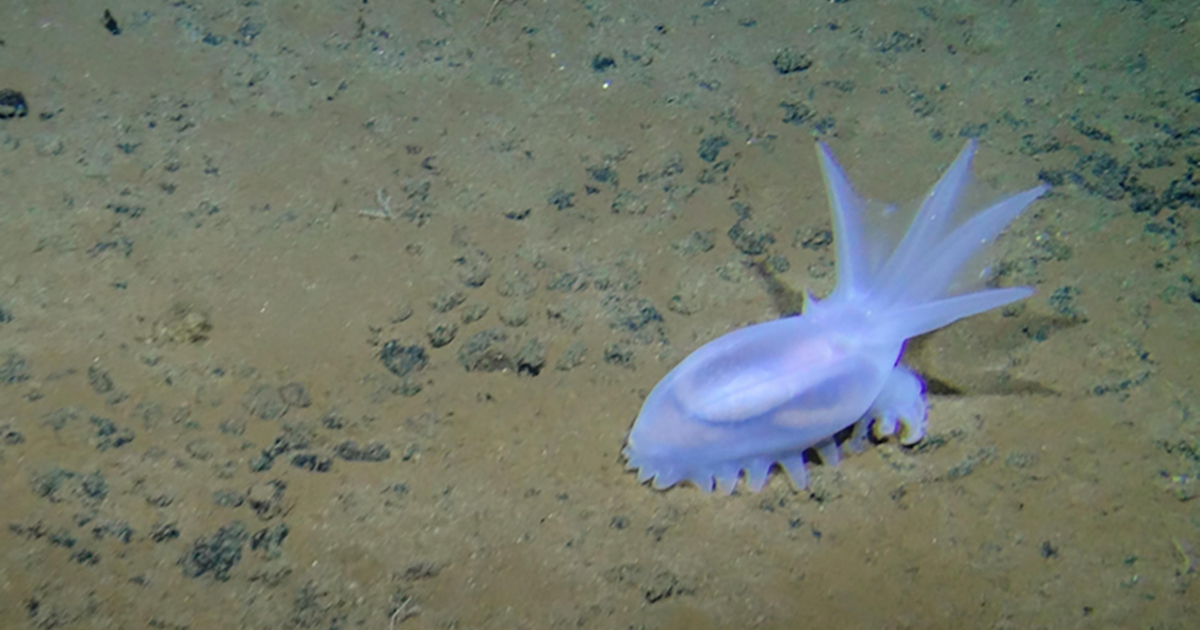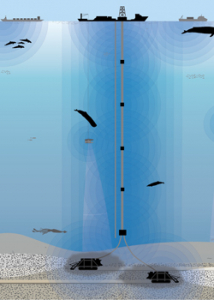Deep-sea Mining Noise Pollution Will Stretch Hundreds of Miles

A study on underwater noise pollution from seabed mining operations found that noise from one mine alone could travel approximately 500 kilometers (roughly 311 miles) in gentle weather conditions, which could affect the understudied species that live in the deep sea—the largest habitat on Earth. There could also be cumulative impacts where multiple mines operate.
Scientists from the University of Hawaiʻi at Mānoa, Oceans Initiative, the National Institute of Advanced Industrial Science and Technology (AIST) in Japan, and Curtin University in Australia, contributed to the study, which was funded by The Pew Charitable Trusts. The findings were published in Science.
The deep sea is home to organisms found nowhere else on Earth–many of whom, given the absence of sunlight, likely use sound to navigate, communicate, find mating partners, locate food, and detect predators and other dangers.
Seventeen contractors are exploring the possibility of mining in the Clarion-Clipperton Zone (CCZ), an area spanning 4.5 million square kilometers (1.7 million square miles) between Hawaiʻi and Mexico and a prime focus of deep-sea mining interest. If each of the contractors were to launch just one mine, an estimated 5.5 million square kilometers (2.1 million square miles)—an area larger than the European Union—would have elevated noise levels. Not only could this level of mining activity have untold impacts on noise-sensitive species, it could also undermine attempts to preserve areas with no mining impact—known as “preservation reference areas”—to use for scientific comparisons.
 “Our modeling suggests that mining noise could impact areas far beyond the actual mining sites, including preservation reference zones, which are required under draft mining regulations to be unaffected by mining,” said Craig R. Smith, a professor emeritus of oceanography at the UH Mānoa School of Ocean and Earth Science and Technology (SOEST), Smith says the finding “could require rethinking of environmental regulations, including the number of mining operations allowed within the CCZ.”
“Our modeling suggests that mining noise could impact areas far beyond the actual mining sites, including preservation reference zones, which are required under draft mining regulations to be unaffected by mining,” said Craig R. Smith, a professor emeritus of oceanography at the UH Mānoa School of Ocean and Earth Science and Technology (SOEST), Smith says the finding “could require rethinking of environmental regulations, including the number of mining operations allowed within the CCZ.”
“What surprised me most was how easy it would be for noise from just one or two mines to impact nearby areas that have been set aside as experimental controls,” said Rob Williams, co-founder of Oceans Initiative. “With so many unknowns, we need a careful comparison of these preservation reference areas to sites where mining is taking place in order to understand mining’s impacts. But noise will cross the boundaries between preservation zones and mining sites.”
Image caption: Sources of noise from deep-sea mining activities will span the entire water column.
Conservative estimates
Although mining companies are already testing smaller-scale prototypes of deep-sea mining systems, they have yet to share their data on underwater noise pollution. The Science article had to use noise levels from better-studied industrial activities, such as oil and gas industry ships and coastal dredges, as placeholders. True noise levels from deep-sea mining may vary once the data is available—but, says Andrew Friedman, project director of Pew’s seabed mining project, they’re more likely to be higher than the proxy data than lower because actual seabed mining equipment is much larger and more powerful than the proxies. “These are probably conservative estimates.”
Christine Erbe, a professor at Curtin University, said, “Estimating the noise of future equipment and installations is a challenge, but we don’t have to wait until the first mines are operational to discover the noise they make. By identifying the level of noise in the engineering design phase, we can better prepare for how this might impact marine life.”

